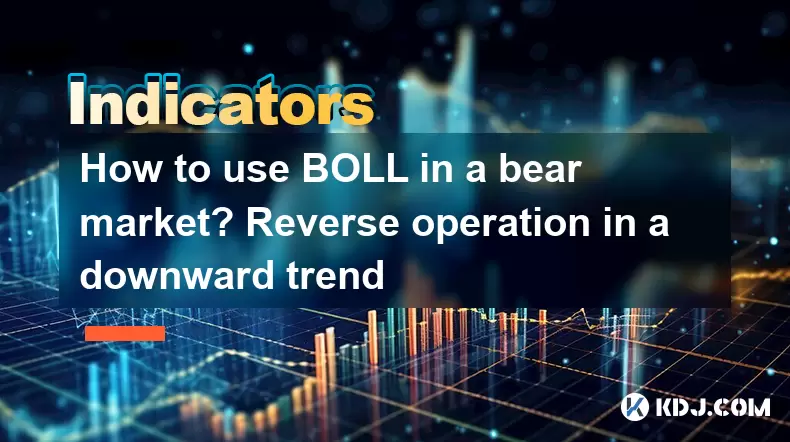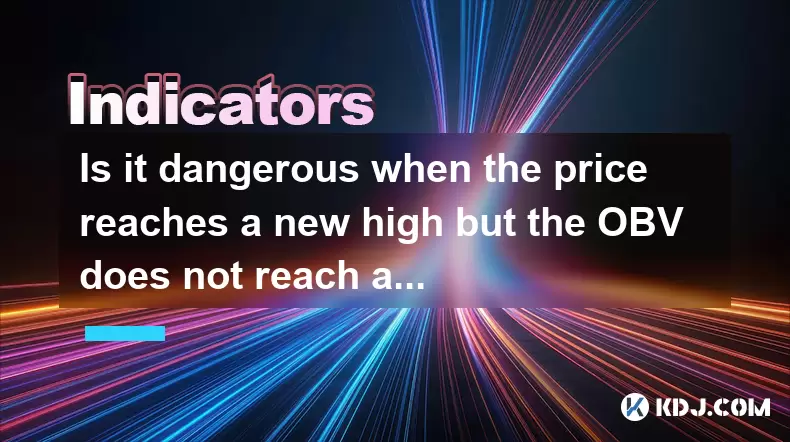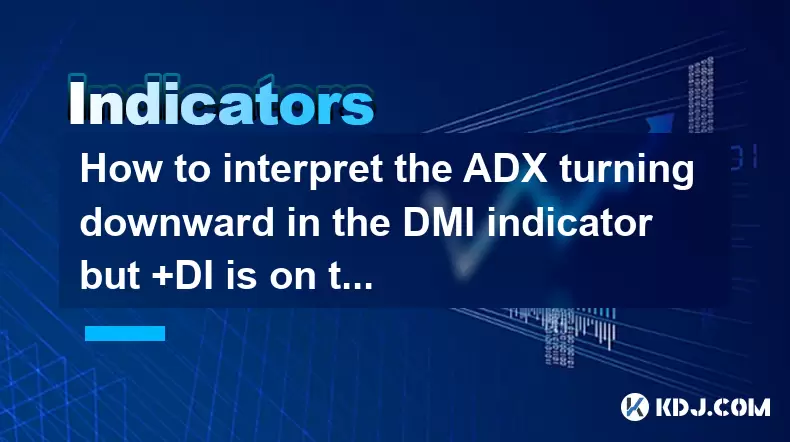-
 Bitcoin
Bitcoin $106,754.6083
1.33% -
 Ethereum
Ethereum $2,625.8249
3.80% -
 Tether USDt
Tether USDt $1.0001
-0.03% -
 XRP
XRP $2.1891
1.67% -
 BNB
BNB $654.5220
0.66% -
 Solana
Solana $156.9428
7.28% -
 USDC
USDC $0.9998
0.00% -
 Dogecoin
Dogecoin $0.1780
1.14% -
 TRON
TRON $0.2706
-0.16% -
 Cardano
Cardano $0.6470
2.77% -
 Hyperliquid
Hyperliquid $44.6467
10.24% -
 Sui
Sui $3.1128
3.86% -
 Bitcoin Cash
Bitcoin Cash $455.7646
3.00% -
 Chainlink
Chainlink $13.6858
4.08% -
 UNUS SED LEO
UNUS SED LEO $9.2682
0.21% -
 Avalanche
Avalanche $19.7433
3.79% -
 Stellar
Stellar $0.2616
1.64% -
 Toncoin
Toncoin $3.0222
2.19% -
 Shiba Inu
Shiba Inu $0.0...01220
1.49% -
 Hedera
Hedera $0.1580
2.75% -
 Litecoin
Litecoin $87.4964
2.29% -
 Polkadot
Polkadot $3.8958
3.05% -
 Ethena USDe
Ethena USDe $1.0000
-0.04% -
 Monero
Monero $317.2263
0.26% -
 Bitget Token
Bitget Token $4.5985
1.68% -
 Dai
Dai $0.9999
0.00% -
 Pepe
Pepe $0.0...01140
2.44% -
 Uniswap
Uniswap $7.6065
5.29% -
 Pi
Pi $0.6042
-2.00% -
 Aave
Aave $289.6343
6.02%
How to use BOLL in a bear market? Reverse operation in a downward trend
In a bear market, use Bollinger Bands to identify overbought conditions for shorting and oversold conditions for buying, enhancing trading decisions with RSI and MACD.
Jun 08, 2025 at 04:15 am

The Bollinger Bands (BOLL) indicator is a powerful tool used by traders to gauge market volatility and potential price reversals. In a bear market, where prices are generally declining, using BOLL can help traders identify potential buying opportunities during temporary upward corrections or prepare for further declines. This article will explore how to effectively use BOLL in a bear market and how to execute reverse operations during a downward trend.
Understanding Bollinger Bands
Bollinger Bands consist of three lines: the middle band, which is typically a simple moving average (SMA), and two outer bands that are standard deviations away from the middle band. The standard settings for BOLL are a 20-day SMA for the middle band and two standard deviations for the upper and lower bands.
In a bear market, the price often stays below the middle band, and the bands can expand or contract based on market volatility. Understanding how these bands interact with price action is crucial for effective trading.
Identifying Overbought and Oversold Conditions
In a bear market, traders can use BOLL to identify overbought and oversold conditions. When the price touches or moves outside the upper band, it may indicate an overbought condition, suggesting a potential reversal or pullback. Conversely, when the price touches or moves below the lower band, it may signal an oversold condition, indicating a potential bounce or further decline.
- Overbought Condition: If the price touches or moves above the upper band, consider it a signal to prepare for a potential downward move.
- Oversold Condition: If the price touches or moves below the lower band, it might be a sign of a temporary bounce, but in a bear market, further declines are more likely.
Reverse Operations in a Downward Trend
Reverse operations in a bear market involve taking positions opposite to the prevailing trend. This strategy can be risky but potentially rewarding if executed correctly. Using BOLL, traders can look for opportunities to short the market during temporary rallies or buy during brief pullbacks.
Shorting on Temporary Rallies
When the price in a bear market temporarily rises and touches the upper band, it may be an opportunity to initiate a short position. Here's how to execute this strategy:
- Monitor the Price: Watch for the price to approach or touch the upper band.
- Confirm the Signal: Look for other bearish indicators, such as bearish candlestick patterns or a bearish divergence in the RSI.
- Enter the Short Position: Once the price touches the upper band and other bearish signals are confirmed, enter a short position.
- Set Stop-Loss: Place a stop-loss just above the upper band to limit potential losses if the price continues to rise.
- Monitor and Exit: Keep an eye on the price and exit the short position when the price approaches the lower band or other bearish signals weaken.
Buying During Brief Pullbacks
In a bear market, brief pullbacks can offer opportunities for buying, especially if the price touches the lower band. Here's how to approach this:
- Monitor the Price: Watch for the price to approach or touch the lower band.
- Confirm the Signal: Look for bullish indicators, such as bullish candlestick patterns or a bullish divergence in the RSI.
- Enter the Long Position: Once the price touches the lower band and other bullish signals are confirmed, enter a long position.
- Set Stop-Loss: Place a stop-loss just below the lower band to limit potential losses if the price continues to fall.
- Monitor and Exit: Keep an eye on the price and exit the long position when the price approaches the middle band or other bullish signals weaken.
Combining BOLL with Other Indicators
To increase the effectiveness of using BOLL in a bear market, traders can combine it with other technical indicators. Some popular indicators to use alongside BOLL include the Relative Strength Index (RSI), Moving Average Convergence Divergence (MACD), and candlestick patterns.
- RSI: The RSI can help confirm overbought and oversold conditions. A reading above 70 might indicate overbought conditions, while a reading below 30 might suggest oversold conditions.
- MACD: The MACD can help identify potential trend reversals. A bearish crossover (when the MACD line crosses below the signal line) can confirm a downward trend, while a bullish crossover can signal a potential bounce.
- Candlestick Patterns: Patterns like doji, hammer, and shooting star can provide additional confirmation for entry and exit points.
Practical Example of Using BOLL in a Bear Market
Let's consider a practical example of using BOLL in a bear market. Suppose Bitcoin is in a bear market, and the price is fluctuating between $20,000 and $30,000. The middle band of the BOLL is at $25,000, with the upper band at $30,000 and the lower band at $20,000.
Scenario 1: Shorting on a Rally
- The price rises to touch the upper band at $30,000.
- The RSI shows an overbought condition (above 70).
- A bearish engulfing candlestick pattern appears.
- You enter a short position at $30,000 with a stop-loss at $30,500.
- The price falls back to the middle band at $25,000, and you exit the short position, securing a profit.
Scenario 2: Buying During a Pullback
- The price falls to touch the lower band at $20,000.
- The RSI shows an oversold condition (below 30).
- A bullish hammer candlestick pattern appears.
- You enter a long position at $20,000 with a stop-loss at $19,500.
- The price rises to the middle band at $25,000, and you exit the long position, securing a profit.
Risk Management in a Bear Market
Risk management is crucial when using BOLL in a bear market. Here are some key strategies to manage risk:
- Position Sizing: Never risk more than a small percentage of your trading capital on a single trade.
- Stop-Loss Orders: Always use stop-loss orders to limit potential losses.
- Diversification: Spread your investments across different assets to reduce risk.
- Continuous Monitoring: Keep an eye on market conditions and adjust your strategy as needed.
FAQs
Q1: Can BOLL be used effectively in all market conditions?
While BOLL is versatile and can be used in various market conditions, its effectiveness can vary. In highly volatile markets, BOLL might generate more false signals, requiring traders to use additional indicators for confirmation.
Q2: How often should I adjust the settings of BOLL?
The standard settings for BOLL (20-day SMA and two standard deviations) are widely used, but traders can adjust them based on their trading style and the asset's volatility. Frequent adjustments are not necessary, but periodic reviews can help optimize the indicator's performance.
Q3: Is it possible to use BOLL for long-term investing in a bear market?
BOLL is primarily a short-term trading tool, but it can be adapted for longer-term strategies. For long-term investing, traders might use longer periods for the SMA and adjust the number of standard deviations to better suit their investment horizon.
Q4: Can BOLL be used in conjunction with fundamental analysis in a bear market?
Yes, combining BOLL with fundamental analysis can provide a more comprehensive view of the market. While BOLL focuses on technical aspects, fundamental analysis can help traders understand the underlying factors driving the market, enhancing their decision-making process.
Disclaimer:info@kdj.com
The information provided is not trading advice. kdj.com does not assume any responsibility for any investments made based on the information provided in this article. Cryptocurrencies are highly volatile and it is highly recommended that you invest with caution after thorough research!
If you believe that the content used on this website infringes your copyright, please contact us immediately (info@kdj.com) and we will delete it promptly.
- 2025-W Uncirculated American Gold Eagle and Dr. Vera Rubin Quarter Mark New Products
- 2025-06-13 06:25:13
- Ruvi AI (RVU) Leverages Blockchain and Artificial Intelligence to Disrupt Marketing, Entertainment, and Finance
- 2025-06-13 07:05:12
- H100 Group AB Raises 101 Million SEK (Approximately $10.6 Million) to Bolster Bitcoin Reserves
- 2025-06-13 06:25:13
- Galaxy Digital CEO Mike Novogratz Says Bitcoin Will Replace Gold and Go to $1,000,000
- 2025-06-13 06:45:13
- Trust Wallet Token (TWT) Price Drops 5.7% as RWA Integration Plans Ignite Excitement
- 2025-06-13 06:45:13
- Ethereum (ETH) Is in the Second Phase of a Three-Stage Market Cycle
- 2025-06-13 07:25:13
Related knowledge

How to interpret the low opening the next day after the long lower shadow hits the bottom?
Jun 18,2025 at 12:22am
Understanding the Long Lower Shadow Candlestick PatternIn technical analysis, a long lower shadow candlestick is often seen as a potential reversal signal in a downtrend. This pattern occurs when the price opens, trades significantly lower during the session, but then recovers to close near the opening price or slightly above. The long wick at the botto...

How to operate the RSI indicator repeatedly in the 40-60 range?
Jun 18,2025 at 12:56am
Understanding the RSI Indicator and Its RelevanceThe Relative Strength Index (RSI) is a momentum oscillator widely used in cryptocurrency trading to measure the speed and change of price movements. Typically, the RSI ranges from 0 to 100, with levels above 70 considered overbought and below 30 considered oversold. However, when the RSI repeatedly stays ...

Why is the volume ratio suddenly enlarged three times but the price fluctuation is small?
Jun 18,2025 at 04:42am
Understanding the Relationship Between Trading Volume and Price MovementIn the world of cryptocurrency trading, volume is a crucial metric that reflects the number of assets traded within a specific time frame. It often serves as an indicator of market interest and liquidity. However, there are instances where trading volume surges dramatically—sometime...

How strong is the MACD golden cross below the zero axis?
Jun 17,2025 at 11:00pm
Understanding the MACD Indicator in Cryptocurrency TradingThe Moving Average Convergence Divergence (MACD) is one of the most widely used technical indicators among cryptocurrency traders. It helps identify potential trend reversals, momentum shifts, and entry or exit points. The MACD consists of three main components: the MACD line, the signal line, an...

Is it dangerous when the price reaches a new high but the OBV does not reach a new high?
Jun 18,2025 at 06:14am
Understanding On-Balance Volume (OBV) in Cryptocurrency TradingIn the world of cryptocurrency trading, technical indicators play a crucial role in analyzing market behavior and predicting future price movements. One such widely used indicator is the On-Balance Volume (OBV), which helps traders assess the strength of buying or selling pressure behind pri...

How to interpret the ADX turning downward in the DMI indicator but +DI is on the top?
Jun 18,2025 at 08:01am
Understanding the Role of Decentralized Finance in Modern Cryptocurrency EcosystemsDecentralized Finance, commonly known as DeFi, has emerged as a cornerstone of the modern cryptocurrency ecosystem. Unlike traditional financial systems that rely on centralized intermediaries like banks and brokers, DeFi platforms operate on blockchain networks to offer ...

How to interpret the low opening the next day after the long lower shadow hits the bottom?
Jun 18,2025 at 12:22am
Understanding the Long Lower Shadow Candlestick PatternIn technical analysis, a long lower shadow candlestick is often seen as a potential reversal signal in a downtrend. This pattern occurs when the price opens, trades significantly lower during the session, but then recovers to close near the opening price or slightly above. The long wick at the botto...

How to operate the RSI indicator repeatedly in the 40-60 range?
Jun 18,2025 at 12:56am
Understanding the RSI Indicator and Its RelevanceThe Relative Strength Index (RSI) is a momentum oscillator widely used in cryptocurrency trading to measure the speed and change of price movements. Typically, the RSI ranges from 0 to 100, with levels above 70 considered overbought and below 30 considered oversold. However, when the RSI repeatedly stays ...

Why is the volume ratio suddenly enlarged three times but the price fluctuation is small?
Jun 18,2025 at 04:42am
Understanding the Relationship Between Trading Volume and Price MovementIn the world of cryptocurrency trading, volume is a crucial metric that reflects the number of assets traded within a specific time frame. It often serves as an indicator of market interest and liquidity. However, there are instances where trading volume surges dramatically—sometime...

How strong is the MACD golden cross below the zero axis?
Jun 17,2025 at 11:00pm
Understanding the MACD Indicator in Cryptocurrency TradingThe Moving Average Convergence Divergence (MACD) is one of the most widely used technical indicators among cryptocurrency traders. It helps identify potential trend reversals, momentum shifts, and entry or exit points. The MACD consists of three main components: the MACD line, the signal line, an...

Is it dangerous when the price reaches a new high but the OBV does not reach a new high?
Jun 18,2025 at 06:14am
Understanding On-Balance Volume (OBV) in Cryptocurrency TradingIn the world of cryptocurrency trading, technical indicators play a crucial role in analyzing market behavior and predicting future price movements. One such widely used indicator is the On-Balance Volume (OBV), which helps traders assess the strength of buying or selling pressure behind pri...

How to interpret the ADX turning downward in the DMI indicator but +DI is on the top?
Jun 18,2025 at 08:01am
Understanding the Role of Decentralized Finance in Modern Cryptocurrency EcosystemsDecentralized Finance, commonly known as DeFi, has emerged as a cornerstone of the modern cryptocurrency ecosystem. Unlike traditional financial systems that rely on centralized intermediaries like banks and brokers, DeFi platforms operate on blockchain networks to offer ...
See all articles

























































































